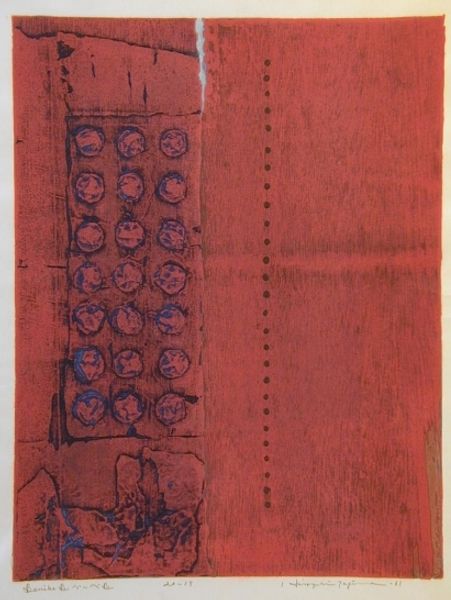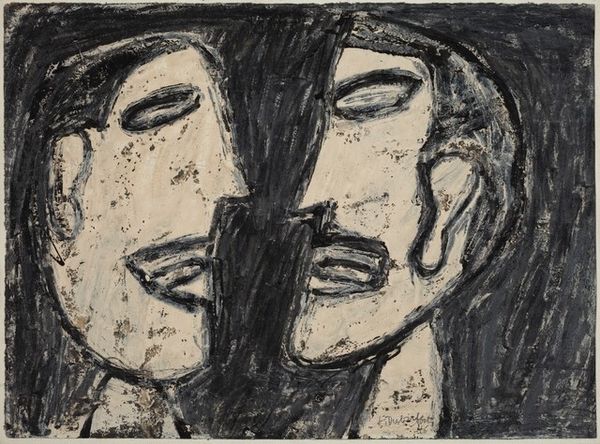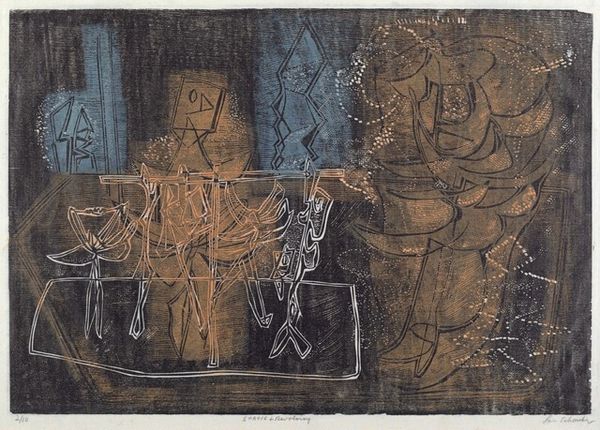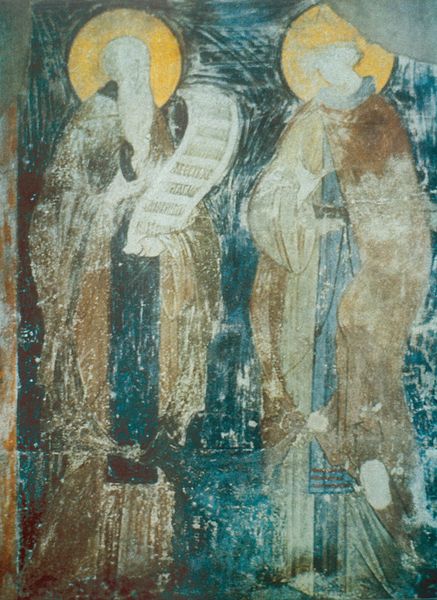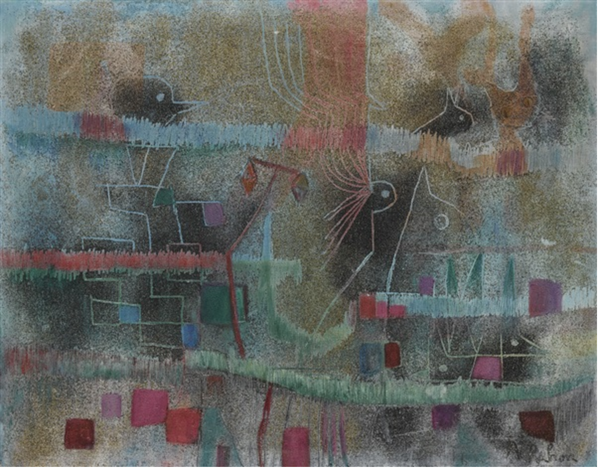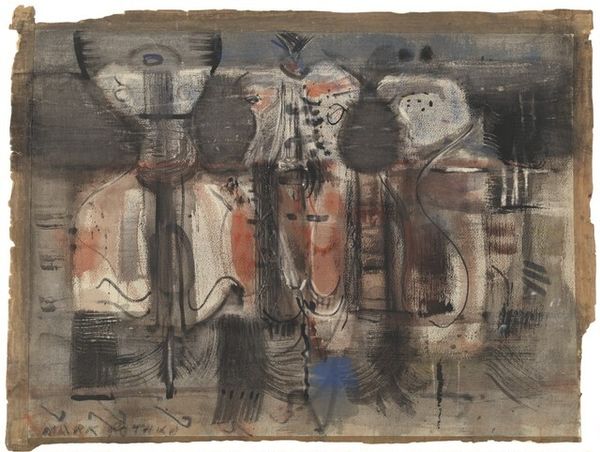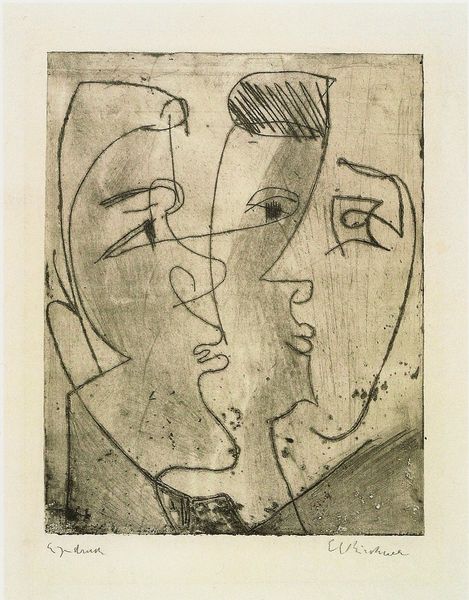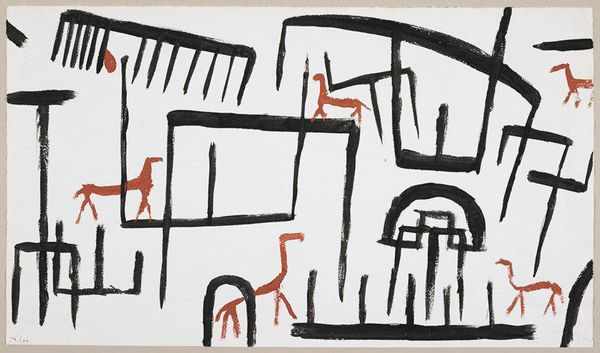
Petite musique pour Edith (A Little Musical Number for Edith) 1946
0:00
0:00
Dimensions: overall: 81 x 100 cm (31 7/8 x 39 3/8 in.) framed: 102.9 x 121.9 x 5.1 cm (40 1/2 x 48 x 2 in.)
Copyright: National Gallery of Art: CC0 1.0
Curator: What do you think of Jean Dubuffet’s 1946 work, "Petite musique pour Edith" -- or "A Little Musical Number for Edith"? It’s oil and mixed media on canvas. Editor: My first impression? It's raw. There's a definite sense of deliberate awkwardness to the figures. It almost feels…punk, even though it predates the movement. Curator: Precisely! Dubuffet sought to reject traditional notions of beauty and embraced what he called "Art Brut," raw art. This piece certainly reflects that. It's from right after the Second World War, so what kind of message might an image like this project to the contemporary world? Editor: Considering that context, I see it as a challenge to the establishment, a dismantling of bourgeois values. The music itself seems secondary; it's about the primal act of creation and maybe even defiance against trauma by rebuilding fractured culture. The so-called "ordinariness" becomes radical. I’m curious if the Edith in the title might also be making reference to gender here, given the artist and the time in history. Curator: Good point. It also relates to Dubuffet's wider critique of Western culture after such destructive conflict, and what it means to reclaim your own narrative from dominant, often toxic ideologies. By intentionally producing art that appears unrefined, and using materials considered base, he elevates the experience of the "everyman". Editor: So, is he presenting "low art" as resistance, celebrating everyday life while critiquing the very concept of a refined culture that allowed such atrocities? This performance isn't perfect. But it is compelling. The figures appear constricted as though by social convention while still trying to perform this musical offering to Edith. It speaks to cultural identity and class at a formative period. Curator: Yes. It’s also how artistic expressions become crucial acts to examine the complexities of trauma and resistance that linger for generations. Well, this look has certainly underscored Dubuffet’s social commentary in such a pivotal post-war setting. Editor: Indeed. It encourages viewers to look past superficial aesthetics and engage with art's deeper implications in a time of crisis, something worth pondering even today.
Comments
No comments
Be the first to comment and join the conversation on the ultimate creative platform.
